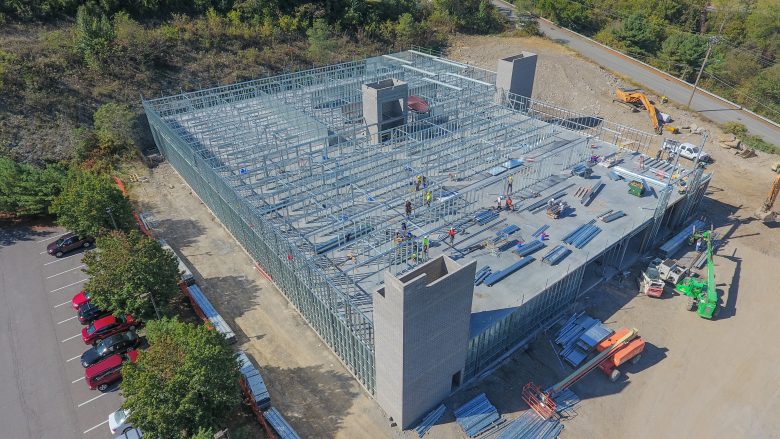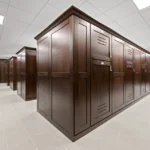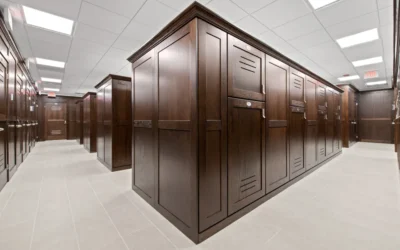Investors getting whipsawed by the stock market could push to diversify more heavily into real estate in 2019, and if they do, self-storage could be the ticket for higher returns than institutional-grade property types.
The Dow Jones Industrial Average (DJIA) finished 2018 down 3.5 percent and lost 13 percent of its value between October and December alone—its worst annual performance since 2008, but the global economy is in good shape and real estate investors shouldn’t fear a real estate crash, said Richard Barkham, Global Chief Economist & Head of Americas Research for CBRE.
Chris Sonne, executive vice president and director of specialty practices for valuation and advisory services at CBRE, said the self-storage sector, often viewed a safe haven, generally won’t dip as much as other property types if a recession does occur in the next couple of years.
Put your money here
Over the past nine years, the sector clocked the lowest average loss severity of all real estate property types with a loss severity of 34 percent, according to Trepp.
“We are seeing folks who are saying ‘I’ve got money that I’ve got to place and over the long run, what is going to be a little bit safer for me, if we are anticipating a downturn in the next couple of years?’” Sonne said.
That safety could be in self-storage, Sonne added.
And although some markets were impacted by oversupply in 2018, self-storage fundamentals, overall, remain in decent shape. Sonne said pockets of oversupply are causing developers and lenders to pay closer attention to underwriting and supply-demand metrics at the trade area level instead of the MSA level, which leads to better decision-making.
“I’m not concerned about overbuilding in the long run,” he said.
In 2018, cap rates were stable, revenue was generally up, and occupancy was stable, he said. For 2019, oversupply will impact several major markets, including Denver, Portland, the Carolinas and major metros in Texas, but even in those MSAs, trade areas could be undersupplied.
“It’s always important to emphasize that I can go to an oversupplied MSA market and still find trade areas that are underserved,” Sonne said.
Slow and steady

A Beyond Self Storage facility under construction in the Pittsburgh, PA, area.
Eric Frankel, a senior analyst who leads self-storage research coverage with Green Street Advisors, said the sector is “still in the midst of a pretty big construction surge, and the impact of that is going to be mixed.”
New supplies could provide investment opportunities for investors who want to acquire recently completed development projects, he said.
“I think there are a lot of institutional investors who want to increase their exposure to the sector because the fundamentals historically have been quite strong, but the fundamentals are slowing because of that construction, too,” Frankel said. “We can expect a roughly flat to inflationary revenue growth for the sector (in 2019) on a same-store basis.”
Development opportunities can still be found although they may not be as prevalent as they were a couple of years ago.
“Self storage is still a decent bet relative to other types of commercial real estate,” Frankel said. “The sector is attractive for its low capital expenditures and low maintenance costs. Investors are still finding yields attractive.”
Green Street expects 2019 supply to reach about 3.5% of stock, which is historically about average for the self-storage sector.
Muted growth ahead
Yardi Matrix said demand will be driven by secondary markets with strong employment gains as well as by low-supply metros with large urban clusters.
Millennials drawn by employment opportunities or who are attending universities have fueled construction in Seattle and Boston, Yardi Matrix said. But supply has had a downward effect on rents, nationally. Street-rate rents for 10 by 10 non-climate controlled units fell by 4.9 percent year-over-year in October 2018 as new deliveries put the brakes on rent growth. Rents at climate-controlled units fell less, by 2.9 percent.
CBRE’s Sonne expects cap rates to remain relatively flat this year, rising about 25 basis points over the year. Income should also rise, albeit moderately, and property valuations are likely to remain relatively flat.
Over the long run, self-storage still remains one of the best real estate investments when compared to other asset classes, Sonne said.







